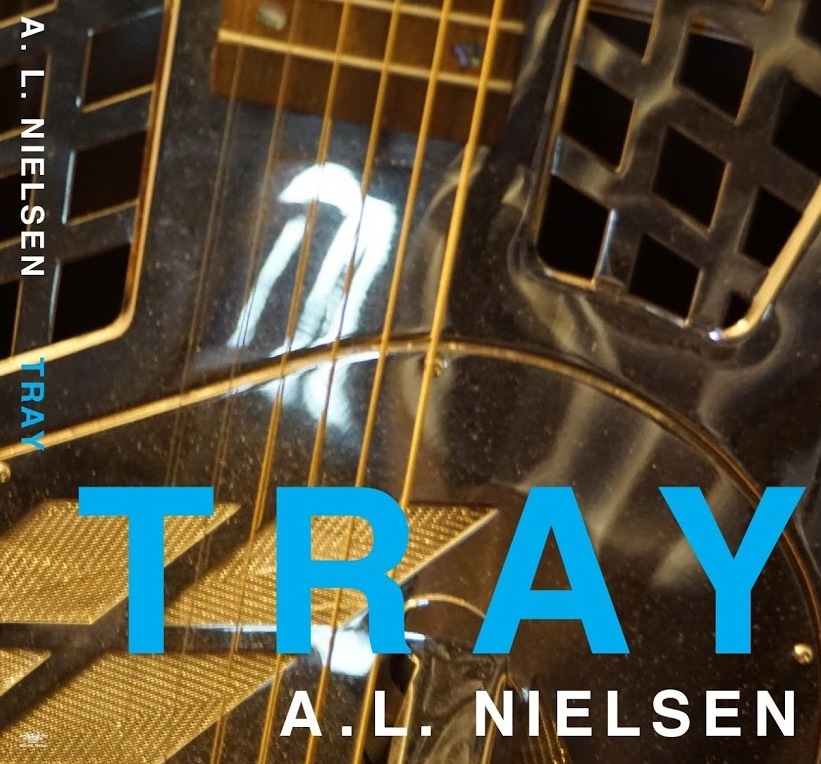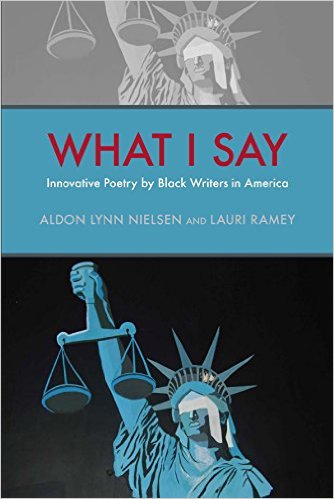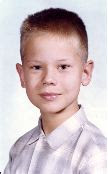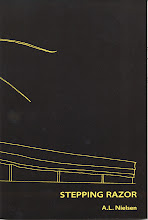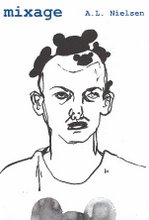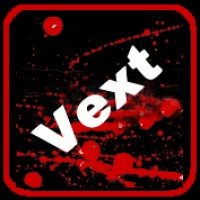
Monday, April 30, 2007
D'SouzaPhonics Redux

Monday, April 16, 2007
COLSON WHITEHEAD AT PENN STATE
sponsored a community reading of Colson Whitehea's first novel, THE INTUITIONIST, with a series of campus discussions of the book culminating in a final discussion with Whitehead himself.

The discussions were organized by the Center's director, Professor Robin Schulze, who also arranged to have copies of the novel (in hardback!) made available free in advance of the visit.

The plan for the evening was that Michael Bérubé would get things started by presenting an essay he had written about the book. This was followed by responses from Charles Harris, of Illinois State University, Louise Bernard, of Georgetown, and me. Then, following an introduction by Bernard Bell, Colson WHitehead would respond to all of us and to questions from the audience.

 Louise Bernard
Louise Bernard I was honored to be asked to participate in this event, and was especially pleased to see Professor Bernard again, who I had first met at the BLACK ARCHIPELAGOS conference organized by poet Mark McMorris at Georgetown.
I was honored to be asked to participate in this event, and was especially pleased to see Professor Bernard again, who I had first met at the BLACK ARCHIPELAGOS conference organized by poet Mark McMorris at Georgetown.

Here is a portion of my own remarks. (and don't worry, there are more photos.)
"Now that I have linked my fortunes to the race I intend to do all I can for its elevation." – Frances E. W. Harper, Iola Leroy (393)


This intriguing intersection of industry and arts in Dayton prefigures something that animates The Intuitionist. We can easily enough see that Dunbar is the very type of Lila Mae Watson’s father: a man with higher aspirations, a man fluent with the intricacies of the most modern machinery, a man larger than the cage of his conveyance. The names that keep cropping up in Whitehead’s novel are equally suggestive. "Watson," recalls, to any lover of mysteries, the companionate narrator of Sherlock Holmes’s peregrinations, but "Watson" is also the name of one of the most important British computer scientists, and "Watson" is the first name ever spoken into a telephone, the name Alexander Graham Bell called when first he found he could call anyone. The name of Fulton has an equally glorious place in the histories of technology. The Pennsylvania-born Robert Fulton was, as we all learned in our school books, an inventor of the steam ship, and I imagine that Colson Whitehead must pass the street bearing Fulton’s name in New York with some frequency.
But it is what we call the machine itself that is most crucial here. The second handout I have given you is a detail from a large mural by Hale Woodruff titled "Settlement and Development," part of a larger project undertaken in 1949 with Charles Alston on The Negro in California History and commissioned by the Golden State Mutual Life Insurance Company.

Woodruff’s mural is a historic montage reaching from 1856 to 1949, depicting a black prospector who has purchased his freedom by dint of his indepedent labors, black cavalrymen protecting Chinese railroad workers, the 1956 Convention of Colored Citizens of California (a group that supplied rifles to John Brown in advance of the raid on Harper’s Ferry), and, prominently placed, a depiction of The Elevator. The Elevator, first published in 1865 by Philip Bell, was among the earliest of California’s African American newspapers, an independent voice for a community that saw itself on the rise. When, in The Colossus of New York Whitehead writes "out of the tunnel and suddenly elevated," he is not simply alluding, intentionally or otherwise, to his own first novel. He is invoking a long-standing discourse of progress. Most reviewers of The Intuitionist have placed it against the backdrop of "uplift discourse," but I think it important to savor its direct participation in the specific discourse of elevation. The publisher and the readers of The Elevator were possessed of the same spirit that Frances E. W. Harper depicted in her character Iola Leroy, a dedication to elevation. In Woodruff’s stunning mural, we see The Elevator’s slogan: "A Weekly Journal of Progress." Progress was its product, and it was measurable. Woodruff shows us the printer hard at work, and he shows us a black woman so eager for the news of this progress and elevation that she is reading the paper as quickly as it comes off the press. This was the spirit of the first elevation, and it was delivered by means of sophisticated technology.


Frances Harper, Philip Bell, Hale Woodruff would all have recognized Lila Mae Watson immediately. We are told over and over again that Lila Mae did not know yet, but we know she is an intuitionist. That intuition is rooted in her father’s experiences. "Who’s ‘we’?" she asks when reading Fulton’s notebooks and published works. American Modernism attempted to conceal its own reliance on Africa and Africans. Black people were consistently assigned the role of atavists. Modernism, it was widely held, was a white thing. You couldn’t tell that to Philip Bell or to the elder Mr. Watson. They knew what Lila Mae was to learn, that if you looked deeply enough into the origins of your technology, you were likely to find black people already there. This has become a commonplace in elementary education in the years since Lila Mae went to school, whatever years those may have been. Many of us came of age hearing school children shouting back a chorus to Stevie Wonder as he chanted a litany of black invention as a part of his Songs in the Key of Life. I do not have time on this evening’s program to unpack this history, but it has been a mainstay of the black intellectual tradition.
Comedian Chris Rock, when he hosted an HBO series, had a routine in which he charted the progress of the race as they struggled to reach the ineffable "There." It was the same "there" that Martin Luther King, a life-long proponent of elevation, had held out as a promise to a nation. It is the "there" promised by Fulton’s black box and intuited by Lila Mae Watson. "It will come," she intuits, and she is never wrong. Our present day seems always teetering on the brink of losing that which the readers of The Elevator were so sure was to come, but Lila Mae is in good company. Her close cousin Sun Ra used to assure us at the close of every concert, "next stop, Jupiter."
Sunday, April 15, 2007
ERUPTIONS OF FUNK Part 2

[what follows is the opening passage of the talk I gave at the ERUPTIONS OF FUNK conference at the University of Alabama]
ALABAMA
When I get to be a composer
I’m gonna write me some music about
Daybreak in Alabama
– Langston Hughes (220)
For Langston Hughes, "Daybreak in Alabama" was to have been a future composition, a to-be-written tune that, when it finally arrived, would be a space of prettiness, song falling from the night as stars fall on Alabama. It was to be a music "rising out of the ground like swamp mist." A contingent composition, it was to await his becoming a composer. It may be instructive to note, briefly in passing, that there is nothing said here of lyrics. It is the music itself that is to be of (both in that most insistent sense of aboutness and in the sense of being of a place) daybreak in Alabama. It was to remain for a later composer, Ricky Ian Gordon, to bring "Daybreak in Alabama" to a score, in a piece recorded by Audra McDonald for her 1998 collection Way Back to Paradise. Here, it was Hughes’s past lyrics that were to be conjoined to a subsequent melody, leaving us, we who listen, lodged in one of those curious folds in tense, one of those proverbial verbal turns whereby the future bites its own anterior, another case of, to borrow a line from Al Young, the song turning back on itself. Between the time of Hughes’s composition, and the time of Gordon’s composing and McDonald’s singing, the song itself was lodged in possibility, a lyric awaiting its lyric turn, in the gap between "when I get to be a composer" and the when of our own auditioning. And it is there in that gap that history was happening, as it is there in that perpetual turning in upon itself of song that there was to be an eruption of funk. That eruption was named "Birmingham," and its lyricist was named Baraka:
Birmingham
Birmingham
was where
4 of my daughters
Were killed
John Coltrane
composed
Alabama
It was the music
that moved
my feet
they never
failed. (Funk Lore 14)
This is the fourteenth segment of a serial composition written to the background of Coltrane’s "Alabama," titled "Masked Angel Costume." It is a poem that so troubles its own lines as to confound easy listening. First, there are those feet. Such a poem, written out of the history of the Civil Rights Movement, cannot help but call to mind the feet of Rosa Parks as she mounts the bus, the feet of the workers walking back and forth during the Montgomery boycott, the feet of the marchers on Selma, the feet of the people in the flooded streets of Birmingham. Baraka’s lyric masks itself as the sayings of Mantan Moreland, that once ubiquitous filmic spectre of racist spectatorship, the projection of Hollywood’s most stereotypic denigrations of black life, a figure who, in film after film, found himself backed into some corner or another where he had to pray that his feet would not fail him in the ever-pressing present. "Never, " advises the experienced Mantan Moreland of Baraka’s poem, " let Mr. Chan / send you into / a dark / room/ by / your self" (12).
But the unfailing feet here are also the feet of meter. James Brown and George Clinton remind us that the chief characteristic of funk is "the one," that hard, unison landing on the first beat, as in the word "Birmingham," both the Birmingham of Baraka’s poem and the Birmingham of the differently measured state of Alabama, with its greater emphasis upon its third syllable. It was the music of history that moved Baraka to write, the material of what happened. The poem is offered as a mask, a mask of history, a mask that recalls a tradition stretching from Dunbar’s "We Wear the Mask" through Mantan Moreland’s mask of subservience to the mask of meter hung deceptively over the eruption of funk. Baraka masks himself as Moreland, claiming as close kin the four little girls killed in racist explosion in Birmingham. The music of history is not a mask for pain, nor is it a disguise. It is not what hurts so much as it is the persistence of poeisis, our measure of ourselves against the day.
Baraka had earlier written of Coltrane’s rhythms as a stay against the madness. Near the end of AM/TRAK, the poet recalls July 1967, not four full years after the bombing of Birmingham’s Sixteenth Street Baptist Church, a summer when Baraka’s Newark erupted in flames and the poet was placed in lockup:
I lay in solitary confinement, July 67
Tanks rolling thru Newark
& whistled all I knew of Trane
My knowledge heartbeat
(Transbluesency 195)
A part of what Baraka knew of Trane, a part of his heartbeat, a part of those measured feet that didn’t fail, that got him through, was John Coltrane’s "Alabama." A meditative response to Birmingham, "Alabama" was one of the first new compositions Coltrane recorded upon his return to New York from Paris in the Fall of the year of the Birmingham bombing. The piece was a direct response to the events in Alabama, and legend has it, though there is some reason for doubt (Porter 331 n11), that Coltrane deliberately derived the cadence for the composition’s haunting opening bars from a speech given by the Reverend Martin Luther King, Jr., after the Birmingham murders. In December of the same year, Coltrane’s group played the work in its entirety as part of an uninterrupted performance on Ralph Gleason’s San Francisco-based public television program, Jazz Casual. It remains one of the most eloquent realizations of the piece preserved on tape, and its feet are part of what saw Baraka through the long, dark Newark night. They are that which does not fail to move us through history, the measure of the "masked angel."
But, while Baraka, Coltrane and Hughes have all left us memorable, indeed indispensable, works that rise from the national experience of Alabama, none of them was properly of that place. Sun Ra, though he continued throughout his life to insist upon his interstellar origins, is known to have seen the full light of day in Birmingham, a city whose portals once greeted visitors with the slogan "A Good Place to Raise a Boy," on May 22, 1914. His sister Mary quickly dispenses with Ra’s originary obfuscations. "He’s not from no Mars," she declares. "He was born at my mother’s aunt’s house over there by the train station" (qtd. in Szwed, 7). This birth came just three years prior to the final stripping of the franchise from all black voters in the state, and only forty-six years after Alabama had been readmitted to the United States following the Civil War. It might be good to remind ourselves that at the time of secession, Alabama had only been a state for forty-two years. Which is to say that only two generations of Alabamans had come to maturity before Alabama left the Union; only two generations had come to maturity between the time of the state’s readmission and the date of Sun Ra’s birth. He was but forty-nine years old on the day that the Sixteenth Street Baptist Church erupted in death and devastation. Ra himself, though, was elsewhere on that dread day, having long left behind the oppressions of daily life in Birmingham. Having removed himself to the outer reaches of the universe, and the inner reaches of Chicago’s South Side, Ra posted his jeremiads to the peoples of earthly America. In one, he writes:
THIS IS THE LAST WARNING TO AMERICA WE AS AMBASSADOR TO THIS COUNTRY OFFER AMERICA WISDOM AND LIFE IF SHE WILL PUBLICLY ADMIT HER SINS WE HEREBY IDENTIFY AMERICA AS THE NINEVAH OF THE BIBLE. WE ACCUSE AMERICA OF CRIME UPON CRIME AGAINST A PEOPLE WHO HAVE BEEN HER BENEFACTORS .... WE ACCUSE AMERICA OF HYPOCRITICAL LIP SERVICE TO THE TRUE GOD......... (Wisdom 67)
America, it must be said, was not listening.
Saturday, April 14, 2007
ERUPTIONS OF FUNK
to leave Minneapolis just before the end of the Dylan Symposium, fly back to Penn State that evening, teach my seminar on CRITICAL ISSUES IN RACE AND ETHNICITY the next morning, switch my suitcase from Minnesota clothes to Alabama clothes, and get on down to Tuscaloosa for the conference titled ERUPTIONS OF FUNK, organized by poet and critic Anthony Bolden. But NorthWest Air had different plans, it seems, and I spent the night in Detroit, a place I love to visit, but I prefer to get beyond the airport. So I was rerouted to Alabama the next morning, missing my seminar, and arrived far earlier than the conference staff had been expecting. Still, they had someone in Birmingham to meet me at the plane, and they were so kind as to drive me by a department store so I could get clean socks and some short sleeve shirts. Then I was ready for the conference.
. . . where one of the first panels featured an excellent talk on the BOONDOCKS comic by Howard Rambsy, a graduate of Penn State's PhD program and currently on the faculty at Southern Illionis State (and keep an eye out for his first book, coming before too much longer, and well worth your reading). Howard was kind enough following the conference to share some of his photos with me. As you can imagine, he did not take this photo of himself, as I did not take any of the photos you'll see here in which I appear. I will try to tag the other photos Howard took in which the provenance isn't as obvious as in those two cases.

One panel included, left to right, Emily Lordi, Ondra Thomas-Krouse and Scott Brown.

Thomas Sayers Ellis, Kalamu ya Salaam Tracy Morris and I gathered around the table where all the sound and visual equipment was stationed, a good twenty feet away from the podium with no remote. This produced some comic effects as we took turns being the "A.V. Nerd" for each other. Thomas showed up at Penn State to give us a poetry reading just a week later.

The panel I was on included Cheryl Keys, Mark Anthony Neal and R. Scott Heath. My own talk here arose from Tony Bolden's desire to have someone give a paper on Alabama-native Sun Ra. So I ventured some remarks on Sun Ra's musical engagements with his own home state. I'll post the opening portion (about Hughes, Baraka and Coltrane) on this blog shortly.

Kalamu and I also spent some time puzzling over a recalcitrant trope we found on the laptop screen.

Scott Heath, like several others, took his turn at the master control.

Mark Anthony Neal started out on the dais, gravitated to the AV table, and wound up wandering productively in the netherworld of funk and critique, much to the benefit of all of us. Mark was also the only cultural studies guy I've ever heard invoke the too nearly forgotten D. J. Rogers, who was not a DJ, but whose "Say You Love Me" will change your life.



The fine folk in Alabama took very good care of us. Here Mark Anthony Neal and Scott Heath, having finished dinner, contemplate the potential move of a major dude from Penn to G'Town.

Tony Bolden wonders what he hath wrought.

Kalamu ya Salaam pays honor to the next generation.

Historian Scott Brown brought his bass with him all the way from UCLA, and got up on stage with the poets both nights. The first evening he jammed with Kalamu ya Salaam; the second night brought us a spirited improvisation between Scott and Tracy Morris, which elicited two surprises: (1) Tracy Morris was a fan of the group Queen, (2) Tracy Morris turns out to have an excellent singing voice. These photos are by Howard Rambsy.
Sunday, April 08, 2007
BOB DYLAN SYMPOSIUM PART 2
The day following our pilgrimage to Hibbing, we gathered on the campus of the University of Minnesota to get the academic portion of our proceedings started. But we didn't start in the usual way, and the first item on the program would have gotten me to Minneapolis even if there hadn't been a Dylan Symposium. Our opening keynote consisted of a performance, all too short, by "Spider" John Koerner and Tony "Little Sun" Glover. These names are familiar, of course, to all those too familiar with Dylan's personal history as two of the people who taught Dylan much of what he knew about folk blues when he wasn't attending classes at the university. They were regulars on the Dinkytown scene and performed at the Ten O'Clock Scholar. If you purchased the official bootleg edition of Dylan's live 1966 CD, you saw the award-winning liner notes that Glover contributed to the project.

But this opening was a serious opportunity for hero worship to me. These men are the surviving members of the triad (they were never actually a trio) whose records were released under the name of KOERNER, RAY & GLOVER. Those LPs, BLUES RAGS AND HOLLERS followed by, believe it or not, LOTS MORE BLUES RAGS & HOLLERS, were required listening for any of us who were interested in that fecund site where bohemia and the acoustic blues met.
And Tony Glover bears a certain responsibility for my own development. His book, BLUES HARP, was like a bible to me in my youth. The book was dedicated to Kenneth Patchen and Sonny Boy Williamson. That's all you really need to know in order to grasp how important Glover was to so many of us. Here in one person we found the worlds of poetry and blues converging in the first really new manner since the days of Sterling Brown (who I was also to meet in my youth).

"Spider" John Koerner I had last seen opening for Taj Mahal one night more than three decades ago. I think it's a mark of the high esteem in which Koerner is held by most who really know the music that Taj spent a good five minutes near the start of his set just going on about how privileged he felt to appear on the same stage with Koerner. How often do you hear that sort of praise from the person whose name heads the bill?

For this set, "Spider" was working with a twelve string, and you wouldn't know from his energetic playing that this was a guy who'd recently had a triple bypass. The duo was forced to do an encore by the enthusiastic audience, and most of us would have been happy to spend the rest of the day just listening to them.
But we had our own business to get to. Still, it wasn't your usual scholarly affair. I'll have to remember to tell my sister that I got to shake hands with Bobby Vee. To Dylan fans, he's the guy Elston Gunnn (a Dylan precursor pseudonym) played with for one night, but to my sister, who owned his records, he will forever be known as the guy who sang THE NIGHT HAS A THOUSAND EYES.

These two guys were the MOST Minnesota people I met all weekend. The fellow on the left is Dave Engel, a Hibbingite who was on a bowling team with Dylan and who has published a book titled JUST LIKE ROBERT ZIMMERMAN'S BLUES. The gentleman in the pink shirt is Dan Bergan, who was one of our guides on the tour of Hibbing. Bergan graduated from Hibbing High and came back later to teach there for thirty years. He's the one who found that stage drop you see in the Hibbing High photos I posted the other day. Bergan was in the same graduating class as Dylan's brother, David, and says the younger Zimmerman was, in his opinion, the more talented of the two.

You'll notice that both Steve Scobie (glasses and red shirt) and I are seen wearing black leather jackets. This is because we are both academics.
Steve is the author of ALIAS BOB DYLAN, which is by far one of the more readable and worthwhile books on Dylan. He's also a fine poet (with two Dylan-related volumes among his works: SLOWLY INTO AUTUMN and AND FORGET MY NAME). He's also retired now, which he wasn't when I met him at Stanford University's Dylan conference some years ago. Must be nice.
One of the real highlights of the symposium was sitting in the hotel bar listening to Steve Scobie and C.P. Lee singing songs they'd learned in their youth, Glasgow street songs and folk revival staples. Lee had given one of the better plenary addresses, expanding on the work he did in his estimable book LIKE THE NIGHT: BOB DYLAN AND THE ROAD TO THE MANCHESTER FREE TRADE HALL. Another truly worthwhile address was the keynote by Greil Marcus, but then one of the interesting things about the symposium was the percentage of really good work that was presented. If you've glanced at the Dylan bibliography, you know that it's opinionated and not always well written, but this symposium offers reason to hope that it's getting better all the time (oops! wrong musical referent there).

Here you see me with poet Anne Waldman and Maria Damon (who was also seen just a couple posts ago with Kamau Brathwaite - lots of poetry in that town). Waldman was a regular on the Rolling Thunder Review and can be seen in RENALDO AND CLARA, that is, if you can ever see RENALDO AND CLARA. Anne became a friend after I met her at the Naropa Institute so it was good to see her again and catch up on family news. Her own plenary session was an interesting mix of commentary, remembrance, quotations from Allen Ginsberg's scattered passages on Dylan, etc.

At the end of the first evening of the symposium, my friend Richard Flynn persuaded me to join him in a trip across town to a little gallery that was hosting an exhibit of photos of Patti Smith. I'm not nearly the fan of Smith that Richard is (which is why you don't see a photo here of me in front of her photos), but I'm a huge fan of little galleries and of the art of photography, and I have to say the photos were impressive. The exhibit was to honor Frank Stefanko's book of his Smith photos, which you can see three gallery goers admiring here.
Afterwards, Richard and I headed back over to Dinkytown, to a pasta restaurant that had been recommended to us by one of the Dylan Symposium organizers, Colleen Sheehy. We wound up sitting upstairs, which is where Dylan sat when he lived in that building long before it had become this amazing restaurant. What Colleen hadn't told us, though, was that this is the weekely gathering spot of Minneapolis's Tango aficianados. There was a remarkably adept Tango combo on the stage, and slowly swirling couples Tangoed below us as we had our dinner.
Friday, April 06, 2007
DYLAN SYMPOSIUM 2007
Sunday, April 01, 2007
BOB DYLAN SYMPOSIUM PART 1
 The day before the University of Minnesota Symposium on Bob Dylan got down to the work of scholarly exchange, everybody piled into a bus for the trip three-and-a-half hours up country to Hibbing (which, as it happens, is the birth place not only of Dylan but of the Greyhound Bus Company). Hibbing turned out to be both farther North (about fifty miles from the Canadian border) and smaller than I had expected. The trip up was enlivened with Dylan videos and pleasant conversations with the gathered Dylanologists.
The day before the University of Minnesota Symposium on Bob Dylan got down to the work of scholarly exchange, everybody piled into a bus for the trip three-and-a-half hours up country to Hibbing (which, as it happens, is the birth place not only of Dylan but of the Greyhound Bus Company). Hibbing turned out to be both farther North (about fifty miles from the Canadian border) and smaller than I had expected. The trip up was enlivened with Dylan videos and pleasant conversations with the gathered Dylanologists.
Still, I was just a bit taken aback by this sign.

But it turned out this had nothing to do with us. Hibbing High had been host to a most successful stage show for children, hence the turtle reference. A sign more relevant to our pursuits was found embedded in the sidewalk at the entrance to Zimmy's cafe and bar.

After lunch, our next stop was the open pit iron mine that was Hibbing's original reason for being. The locals are fond of comparing this "largest hole in the world dug by humans" to the Grand Canyon. I was struck by something else, though. When Dylan was first trying to get started as a musician, he headed West, playing around Denver and in Central City. If you've ever been to Central City, Colorado, you've no doubt visited its original reason for being, an open pit gold mine. What was it about humans gouging huge holes in the earth that seems to have exercised a magnetic attraction on Dylan in his formative years? Each of us was presented with a little plastic bag contining taconite balls, the current form of iron product from this nearly depleted mine, leaving each of us with the prospect of having to explain our taconite balls to the Transportation Safety agents at the metal detectors in the airports we would pass through on our way home.



I don't know about you, but my high school did not feature chandeliers in the hallway dangling from ceilings of twisted horsehair covered in decorative plaster.
In the library we found these classic panels.

And the auditorium, in which Dylan was booed at one of his earliest public performances, proved to be by far the fanciest venue in which he was to appear for many a year. He had a larger audience here, despite the booing, than he was to have in his first appearance at Carnegie Hall's Chapter auditorium.

This is one of the surviving drops still hanging at stage front. There were many of these available for the various Hibbing theatrical productions, and the auditorium had what was for the time truly sophisticated lighting and sound equipment.

Even with Zimmy's on the main street, and these signs running along the street by the high school, most Hibbing residents don't make much of Dylan, and the youngest don't know who he is. But Hibbing is invested in Dylan increasingly, hosting an annual Dylan Days festival around his birthdate. This year's Dylan Days will feature a performance by Maria Muldaur, who has recently released a collection of Dylan's love songs.

At some point, an earlier owner of the house where Dylan had lived as a child had the garage door rendered as the cover of BLOOD ON THE TRACKS. There's a guy down the street who drives a truck for Lay's Potato Chips, and the sign on his truck dwarfs this one.

And this is Dylan's home.

The present owner of the home, in a meta moment of turnabout, asked us all to line up around the porch so that he could take our photo.

We also visited the Armory, scene of the adolescent Dylan's performances with THE GOLDEN CHORDS, his band of the day. I wasn't entirely sure what this sign was warning me about.
Inside the Armory we found several women's curling teams in action. This is a sport I've only seen on television during the Winter Olympics, so it was intriguing to see it up close and get a better idea of its intricacies. The story that Dylan introduced the Beatles to curling during a pot party in New York, leading to the appearance of the sport in their film HELP, appears to be an urban legend.














